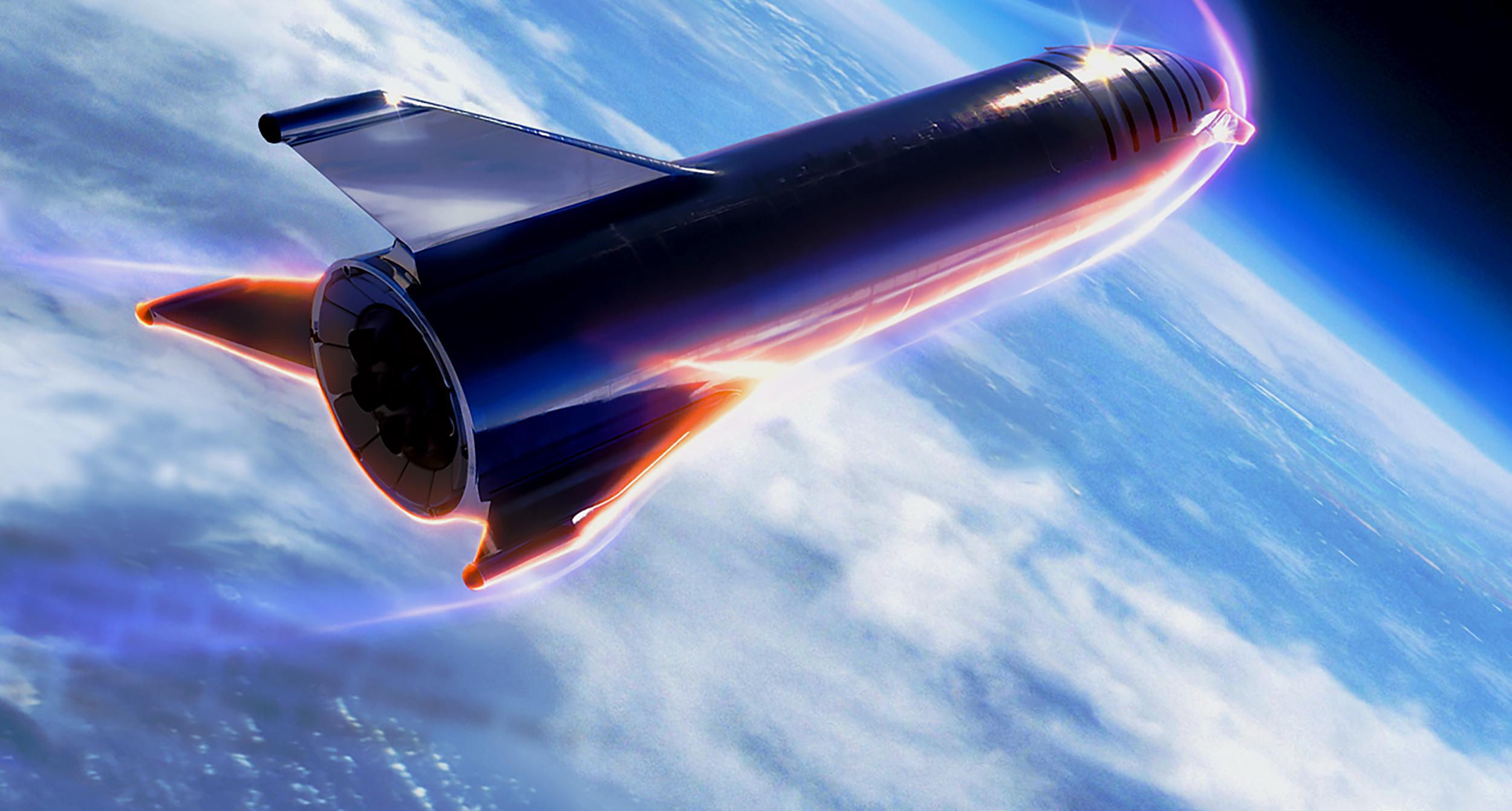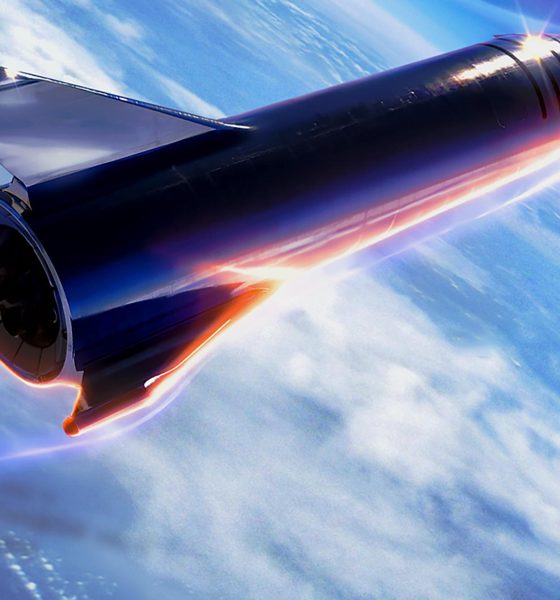

News
SpaceX CEO Elon Musk teases Starship flight debut details, reveals presentation date
Speaking on August 28th, CEO Elon Musk says that SpaceX’s first Starship flight test(s) could occur as early as October 2019, in line with a late-July estimate that pegged the milestone at 2-3 months out.
Under construction in Cocoa, Florida and Boca Chica, Texas, SpaceX’s duo of orbital-class Starship prototypes have made immense progress in the last two or so months, part of a (hopefully friendly) internal competition to be first to flight and first to orbit. Elon Musk has been planning to present an updated overview on the next-generation SpaceX launch vehicle, originally expected in August before a variety of factors pushed it into September. Musk says that presentation is now scheduled no earlier than (NET) September 28th.
Musk has previously described the highly-anticipated update as a technical overview of the decision-making process that has lead SpaceX to replace Starship’s composite design with stainless steel, among many other changes the rocket has undergone in the last 6-12 months. Aside from the obvious, Musk recently revealed that Starship’s fins/legs/wings also had to be modified from the tripod fin/canard setup shown in SpaceX’s September 2018 design update.
The first of Starship Mk1’s (Texas) landing fins or canards arrived in Boca Chica in mid-August, followed soon after by what appeared to be header tanks (smaller internal tanks for landing propellant), and what has been described as “the guts of Starship”. Although SpaceX’s Starship Mk2 (Cocoa, FL) team was forced to pause work for several days as a result of the incoming Hurricane Dorian, work in Texas has proceeded unabated and continues around the clock with two or three shifts.
Starship Mk1’s triple-Raptor thrust structure was installed inside the vehicle’s tank section several weeks ago. Workers are now in the process of installing the Starship’s common bulkhead, a dome that will separate its liquid oxygen and methane tanks, and a third and final dome – the top of Starship’s LOx tank – is in the late stages of assembly.
In short, SpaceX’s Mk1 Starship continues to maintain an absolutely blistering pace of progress and could very well be ready in time for Musk’s proposed October flight debut, despite the fact that the CEO is more than a little infamous for his near-impossible deadlines and schedules.
Starship’s first flight
Musk says that Starship’s first flight – likely featuring the Mk1 vehicle – or a subsequent test flight could see the spacecraft prototype reach an altitude of 20 km (12 mi/~64,000 ft), indicating that SpaceX plans to transition into high-altitude, high-velocity testing as soon as possible.
Incredibly, Musk also stated that Starship’s inaugural orbital launch attempt could come “shortly thereafter”, an attempt that – according to previous statements from Musk – would demand the completion of the first Super Heavy booster, as well as the 20+ Raptor engines it would require. Musk estimated that Raptor will reach orbital flight-readiness as early as October or November, while an orbital flight test before the end of 2019 would technically mesh with his late-July estimate of December/January.
Whether or not SpaceX manages to achieve that almost unbelievably ambitious target, it seems entirely plausible that – barring unforeseen developments – Starship Mk1 and Mk2 will be ready for flight testing well before the end of 2019. Stay tuned for updates as Starship assembly continues in Texas and Florida.
Check out Teslarati’s Marketplace! We offer Tesla accessories, including for the Tesla Cybertruck and Tesla Model 3.

News
Tesla FSD fleet is nearing 7 billion total miles, including 2.5 billion city miles
As can be seen on Tesla’s official FSD webpage, vehicles equipped with the system have now navigated over 6.99 billion miles.

Tesla’s Full Self-Driving (Supervised) fleet is closing in on almost 7 billion total miles driven, as per data posted by the company on its official FSD webpage.
These figures hint at the massive scale of data fueling Tesla’s rapid FSD improvements, which have been quite notable as of late.
FSD mileage milestones
As can be seen on Tesla’s official FSD webpage, vehicles equipped with the system have now navigated over 6.99 billion miles. Tesla owner and avid FSD tester Whole Mars Catalog also shared a screenshot indicating that from the nearly 7 billion miles traveled by the FSD fleet, more than 2.5 billion miles were driven inside cities.
City miles are particularly valuable for complex urban scenarios like unprotected turns, pedestrian interactions, and traffic lights. This is also the difference-maker for FSD, as only complex solutions, such as Waymo’s self-driving taxis, operate similarly on inner-city streets. And even then, incidents such as the San Francisco blackouts have proven challenging for sensor-rich vehicles like Waymos.
Tesla’s data edge
Tesla has a number of advantages in the autonomous vehicle sector, one of which is the size of its fleet and the number of vehicles training FSD on real-world roads. Tesla’s nearly 7 billion FSD miles then allow the company to roll out updates that make its vehicles behave like they are being driven by experienced drivers, even if they are operating on their own.
So notable are Tesla’s improvements to FSD that NVIDIA Director of Robotics Jim Fan, after experiencing FSD v14, noted that the system is the first AI that passes what he described as a “Physical Turing Test.”
“Despite knowing exactly how robot learning works, I still find it magical watching the steering wheel turn by itself. First it feels surreal, next it becomes routine. Then, like the smartphone, taking it away actively hurts. This is how humanity gets rewired and glued to god-like technologies,” Fan wrote in a post on X.
News
Tesla starts showing how FSD will change lives in Europe
Local officials tested the system on narrow country roads and were impressed by FSD’s smooth, human-like driving, with some calling the service a game-changer for everyday life in areas that are far from urban centers.

Tesla has launched Europe’s first public shuttle service using Full Self-Driving (Supervised) in the rural Eifelkreis Bitburg-Prüm region of Germany, demonstrating how the technology can restore independence and mobility for people who struggle with limited transport options.
Local officials tested the system on narrow country roads and were impressed by FSD’s smooth, human-like driving, with some calling the service a game-changer for everyday life in areas that are far from urban centers.
Officials see real impact on rural residents
Arzfeld Mayor Johannes Kuhl and District Administrator Andreas Kruppert personally tested the Tesla shuttle service. This allowed them to see just how well FSD navigated winding lanes and rural roads confidently. Kruppert said, “Autonomous driving sounds like science fiction to many, but we simply see here that it works totally well in rural regions too.” Kuhl, for his part, also noted that FSD “feels like a very experienced driver.”
The pilot complements the area’s “Citizen Bus” program, which provides on-demand rides for elderly residents who can no longer drive themselves. Tesla Europe shared a video of a demonstration of the service, highlighting how FSD gives people their freedom back, even in places where public transport is not as prevalent.
What the Ministry for Economic Affairs and Transport says
Rhineland-Palatinate’s Minister Daniela Schmitt supported the project, praising the collaboration that made this “first of its kind in Europe” possible. As per the ministry, the rural rollout for the service shows FSD’s potential beyond major cities, and it delivers tangible benefits like grocery runs, doctor visits, and social connections for isolated residents.
“Reliable and flexible mobility is especially vital in rural areas. With the launch of a shuttle service using self-driving vehicles (FSD supervised) by Tesla in the Eifelkreis Bitburg-Prüm, an innovative pilot project is now getting underway that complements local community bus services. It is the first project of its kind in Europe.
“The result is a real gain for rural mobility: greater accessibility, more flexibility and tangible benefits for everyday life. A strong signal for innovation, cooperation and future-oriented mobility beyond urban centers,” the ministry wrote in a LinkedIn post.
News
Tesla China quietly posts Robotaxi-related job listing
Tesla China is currently seeking a Low Voltage Electrical Engineer to work on circuit board design for the company’s autonomous vehicles.

Tesla has posted a new job listing in Shanghai explicitly tied to its Robotaxi program, fueling speculation that the company is preparing to launch its dedicated autonomous ride-hailing service in China.
As noted in the listing, Tesla China is currently seeking a Low Voltage Electrical Engineer to work on circuit board design for the company’s autonomous vehicles.
Robotaxi-specific role
The listing, which was shared on social media platform X by industry watcher @tslaming, suggested that Tesla China is looking to fill the role urgently. The job listing itself specifically mentions that the person hired for the role will be working on the Low Voltage Hardware team, which would design the circuit boards that would serve as the nervous system of the Robotaxi.
Key tasks for the role, as indicated in the job listing, include collaboration with PCB layout, firmware, mechanical, program management, and validation teams, among other responsibilities. The role is based in Shanghai.
China Robotaxi launch
China represents a massive potential market for robotaxis, with its dense urban centers and supportive policies in select cities. Tesla has limited permission to roll out FSD in the country, though despite this, its vehicles have been hailed as among the best in the market when it comes to autonomous features. So far, at least, it appears that China supports Tesla’s FSD and Robotaxi rollout.
This was hinted at in November, when Tesla brought the Cybercab to the 8th China International Import Expo (CIIE) in Shanghai, marking the first time that the autonomous two-seater was brought to the Asia-Pacific region. The vehicle, despite not having a release date in China, received a significant amount of interest among the event’s attendees.








